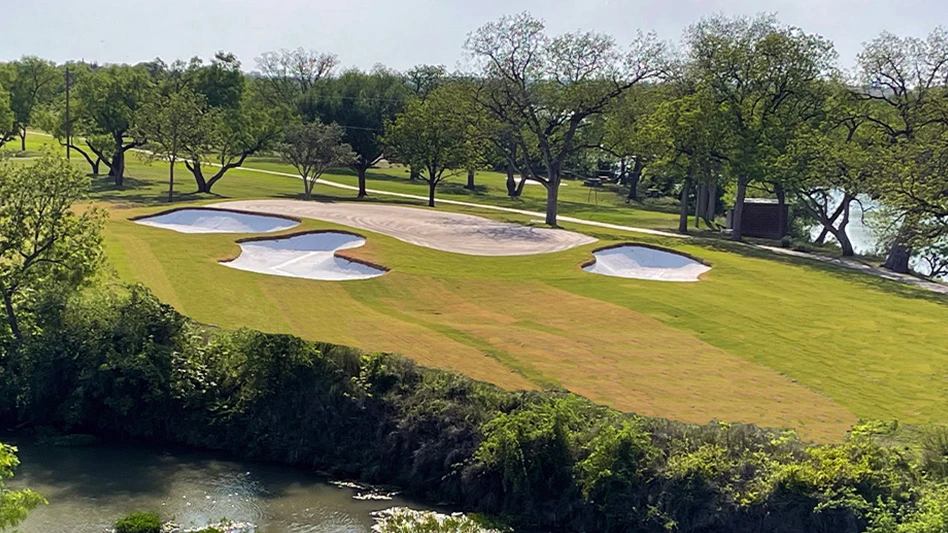|
|
“Think outside the box” is a popular expression. But how many can define it readily and apply it for personal or professional benefit?
For some people, coloring outside the lines or thinking outside the box is innate. They’re born with the creativity to accept, and prefer, the thought process. For others, it’s a learned appreciation. But, the application of this learned behavior can be beneficial to golf course owners and managers personally and professionally.
By this time of the year, golf course owners and managers have formulated their 2006 plan for success to take advantage of their existing or planned unique market positioning. Appropriately, you can begin this process by applying the basics of theoretical marketing recognized as the four Ps of marketing – often referred to as the marketing mix.
The marketing mix became a popular idiom after Neil Borden published “The Concept of the Marketing Mix” in 1964. The ingredients in Borden’s marketing mix consisted of product planning, pricing, branding, distribution channels, personal selling, advertising, promotions, packaging, display, servicing, physical handling, and fact finding and analysis. E. Jerome McCarthy later grouped these ingredients into four categories that are designated as the four Ps of marketing.
Follow the four Ps of golf course marketing – price, product, promotion and packaging – and you’ll be better prepared for the new season than 70 percent of all golf course operations. Place is actually one of the original four Ps McCarthy introduced and refers to distribution channels primarily. (For example: a product, such as potato chips, needs to be baked at a site, bulk packaged, shipped to distribution outlets, then shipped to regional warehouses, and ultimately delivered to stores for consumer consumption.) I’ve substituted packaging in my reference for golf course marketing because it relates well to most golf courses’ successful implementation of effective and efficient marketing. Face it, the place or location of your golf course is a critical marketing element.
Let’s review practical applications of the four Ps for golf course marketing:
Product. In concert with your superintendent and his staff, were you able to adjust maintenance levels to position the course experience strategically to match the adjusted rack rate based on value to the customer?
Promotion. By segmenting total rounds into individual business categories (member play, outside play, outings, leagues, discount/twilight, etc.), have you formulated an advertising and promotions plan to maximize play from each segment with corresponding budget expenditures? Or, if nothing else, have you tested your ability to attract these different segments of play to your course?
Packaging. With a critical eye, have you reviewed all of your marketing collateral materials to make sure the image of your course is conveyed according to the price you’re asking customers to pay? Is the rack card four-color quality? Does the outing brochure quality match the customers’ expected experience? Are the graphics on the direct-mail pieces meaningful to their intended targets? Does the signage leading to your clubhouse communicate a sense of welcome to your facility?
Marketing is a systematic approach (inside the box) and a welcoming solicitation of your likely business targets: introduction, qualifying, requalifying (if necessary), meeting certain needs or desires (expectations) and asking for the order “play and enjoy our golf course.” When golfers’ experiences match their expectations in relation to recreational experience and value, you’ll have developed a loyal customer likely to refer other golfers to your course.
So, what do you do when all of the basics of golf course marketing have been set in place, checked and rechecked for efficiency and effectiveness and you’re still not realizing the needed revenue to cover debt service and produce a profit? The first answer is to recheck your basics. If your marketing programs are in order and systematically being carried out by a designated sales/marketing person, a portion of your profit solution is likely to be realized by thinking outside the box. But can you?
I’m not going to pretend to teach anyone to think outside the box in one column. If I’m lucky, I might be able to get a few to begin to think in ways they hadn’t before. Think of perspective. How do golfers view their experience at your facility? What would add value to their experience, to their membership, to their perception of their allegiance to your facility?
Business partnerships might change that perspective and add to a desired sense of belonging, and therefore, value to your course whether it’s private or public. After all, that’s the key to successful private clubs, isn’t it?
The first step to create business-to-golf course partnerships isn’t creating ideas you think will be attractive to your players or members. Ask them what’s desired, or missing, from their experience at your club through player and member surveys. Conduct the research first, and then develop appropriate partnerships based on a consensus of responses.
An example might be a prestigious private club partnering with an exclusive city club or performing arts theatre – based on survey results that said your members desired such a relationship. If so, the effort is well worthwhile.
On the public course side, an often-repeated partnership might be with an off-course golf shop. Public-access courses are hard-pressed to stock all the latest and greatest new equipment. If your research indicates a perceived desire, and you established a beneficial partnership with the local off-course retailer, you could provide your loyal following with a sense of the same partnership. And, if those players were affiliates of your annual or frequent player program, you might be able to establish preferred discounts for them through the retailer. The retailer benefits by having a presence with golfers frequenting the course. You benefit by being able to provide something that you normally wouldn’t stock.
The key is perception. How keen is yours? GCN
Jack Brennan founded Paladin Golf Marketing in Plant City, Fla., to assist golf course owners and managers with successful marketing. He can be reached at Jackbrennan@tampabay.rr.com.
WANT MORE?
Enter your email to receive our newsletters.

Explore the January 2006 Issue
Check out more from this issue and find your next story to read.
Latest from Golf Course Industry
- PBI-Gordon promotes Jeff Marvin
- USGA investing $1 million into Western Pennsylvania public golf
- KemperSports taps new strategy EVP
- Audubon International marks Earth Day in growth mode
- Editor’s notebook: Do your part
- Greens with Envy 66: A Southern spring road trip
- GCSAA’s Rounds 4 Research auction begins
- Quali-Pro hires new technical services manager







